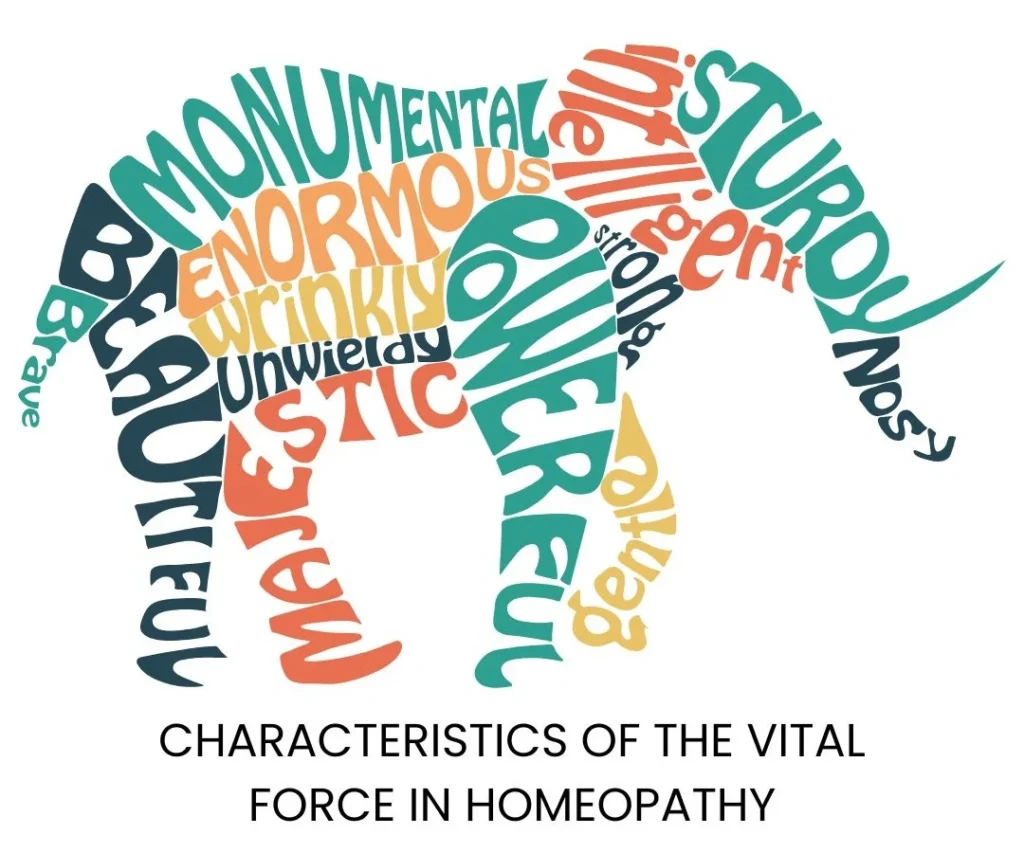In homeopathy, the concept of vital force is foundational. It is the invisible life energy that animates the physical body, maintains balance, and governs all physiological and pathological processes.
Without it, there is no life — only a shell. Understanding the characteristics of the vital force not only deepens our grasp of homeopathic philosophy but also helps both practitioners and patients appreciate how healing occurs at a deeper, dynamic level.
But what exactly is this “vital force“?
How does it function?
Is it intelligent or automatic?
Why do we say it is instinctive or spirit-like?
“What breathes life into the body? What keeps every heartbeat aligned and every function in flow, even while we sleep? In homeopathy, that silent orchestrator is called the vital force.”
If you’re a homeopath, a student, or even a curious patient trying to understand this fascinating concept, you’re in the right place.
Let’s decode the invisible intelligence that governs life itself – not just with abstract theory, but in a way that clicks.

What is the Vital Force?
The vital force in homeopathy is described as an autocratic, autonomic, spirit-like, unintelligent, dynamic, instinctive, life-preserving force that animates the material body.
Think of it as the power supply behind your phone. You can use the apps (organs), see the screen light up (functions), but remove the battery (vital force) and it’s nothing but dead hardware.
Now let’s understand each characteristic of this mysterious yet vital (pun intended!) force.
1. Autocratic – Self-Powered Sovereignty
“Auto” = Self | “Kratic” = Power/Control
This means the vital force has complete authority over the body.
It doesn’t take commands from the brain, heart, or hormones. Instead, it’s the one directing them!
Example: When you cut your finger, you don’t tell your body to form a clot. The vital force automatically initiates the healing cascade.
2. Autonomic or Automatic – The Silent Worker
It operates without your permission or knowledge.
Whether you’re sleeping, hiking, or binge-watching a series, your vital force is on duty. It regulates breathing, temperature, digestion, and countless things you never have to think about.
Like a factory machine working 24/7 to keep the production line running, even during power cuts in your brain.
3. Spirit-like – Immaterial but Indispensable
You can’t touch, weigh, or dissect the vital force.
But can you touch the wind? No. You only feel its presence through movement.
Same with the vital force – you know it’s there because your body functions. It’s not bound by mass or volume. It’s immaterial but very real.
4. Unintelligent – No Logic, Just Instinct
Wait, did you just say the life force isn’t smart?
Yes – but hear us out!
It doesn’t reason like the intellect. It doesn’t analyze or plan.
It acts based on impulse and instinct to preserve life – even if it has to make a tough choice.
Example: In a serious infection, the body may sacrifice a limb (like in gangrene or polio recovery) to save the person. Not logical, but life-saving.
Hahnemann noted this in “Chronic Diseases”:
“It is undeniable that our vital force… cannot overcome even slight acute diseases without sacrificing some parts of the organism.”
5. Dynamic – Invisible Yet Everywhere
The vital force is a dynamic (energy-based) entity.
We don’t know how it flows cell to cell, but we observe its impact clearly.
Just like Wi-Fi signals – you can’t see them, but you know they’re working when you stream your favorite show.
Without dynamic flow = no function.
6. Instinctive – Nature’s Programmed Code
It follows natural laws, not personal opinions.
It doesn’t change with your personality or emotional preferences. It acts uniformly according to the universal instinct of preserving life.
Example: Whether it’s a monk or a mischief-maker, both will get a fever if infected. The vital force responds to threat instinctively.
7. Life-Preserving Power – The True Proof of Life
The ultimate evidence of the vital force?
When it departs, life ceases.
You can have a perfect body – intact heart, brain, and lungs – but if there’s no vital force, it’s just matter.
Think of it like electricity in a bulb. The filament may be perfect, but without current, it’s dark.
So… Why Does This Matter in Homeopathy?
Because in homeopathy, we treat the vital force – not just the organs.
When someone falls sick, it’s not just the liver or lungs acting up. It’s the vital force that’s been disturbed. Homeopathic remedies work by stimulating and restoring balance to this force.
That’s why homeopathy is dynamic in nature. A material drug won’t affect a dynamic force. But a potentized remedy (dynamic in itself)? That speaks the same language.
Let’s Recap: The 7 Pillars of Vital Force
- Autocratic – Supreme authority of body functions
- Autonomic – Self-governing, uninterrupted action
- Spirit-like – Invisible yet vital
- Unintelligent – Acts on instinct, not logic
- Dynamic – Energetic, not material
- Instinctive – Follows natural law
- Life-Preserving – The mark of being alive
Final Thoughts: Respecting the Invisible Commander
In an age of test reports and scans, it’s easy to forget the unseen intelligence holding everything together.
The more we understand and honor the vital force, the better we can practice homeopathy with depth, precision, and compassion.
So next time you prescribe a remedy, don’t just think of organs or symptoms. Think of the orchestra conductor behind it all – the vital force.
